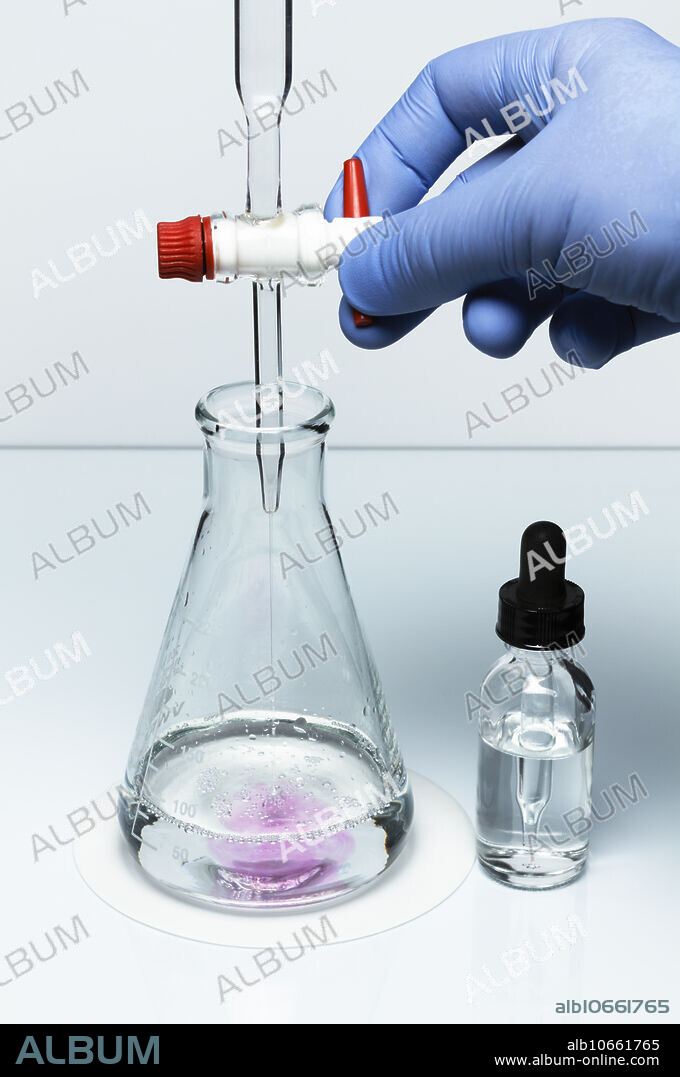alb10661765
Acid-base titration, 3 of 7

|
Add to another lightbox |
|
Add to another lightbox |



Title:
Acid-base titration, 3 of 7
Caption:
Acid-base titration, 3 of 7. In this sequence the Erlenmeyer flask initially contains 50 mL of sulfuric acid (H2SO4) solution of unknown concentration (0.04M was used here). Burette above it contains 0.1M solution of sodium hydroxide (NaOH), Photo 1. First, a couple of drops of phenolphthalein are added to Erlenmeyer flask and the acidic solution remains clear, Photo 2. Sodium hydroxide is then added gradually, turning the solution pink locally, Photo 3. The flask is swirled to mix the content, Photo 4, and the solution becomes clear. When the last drop is added, Photo 5, the solution retains pale pink colour, Photo 6. At this point (equivalence point) the volume of the base used is recorded and the initial concentration of the acidic solution is calculated. When sodium hydroxide is added in access beyond the equivalence point, the solution turns bright pink, Photo 7, indicating basic solution.
Credit:
Album / Turtle Rock Scientific/Science Source
Releases:
Model: No - Property: No
Rights questions?
Rights questions?
Image size:
3408 x 5135 px | 50.1 MB
Print size:
28.9 x 43.5 cm | 11.4 x 17.1 in (300 dpi)
 Pinterest
Pinterest Twitter
Twitter Facebook
Facebook Copy link
Copy link Email
Email

